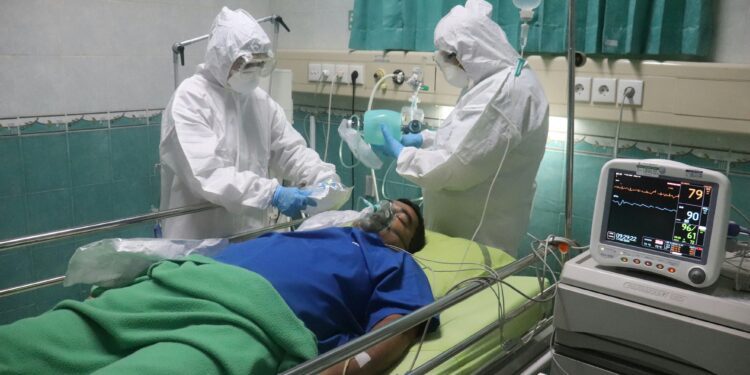A single late-night crisis can define a hospital’s capacity to save a life. On June 24, the Global Sepsis Alliance unveiled its first-ever expert consensus for adult sepsis management in resource-limited settings, outlining 23 clinical practice statements designed to bridge gaps where intensive-care units and laboratory diagnostics are scarce. While the guidance promises to standardize care across low- and middle-income regions, clinicians warn that the expense of key recommendations—such as point-of-care lactate testing and vasopressor pumps—could consign many hospitals to inaction.
Building Consensus Through Delphi Deliberation
The consensus statements emerged from a rigorous Delphi process convened by an Asia Pacific Sepsis Alliance steering committee, as detailed in the Springer publication. Over three rounds, 94 percent agreement was achieved on five domains: early recognition, fluid resuscitation, antimicrobial timing, haemodynamic support, and respiratory management. The panel included clinicians from Africa, South Asia, and Latin America, ensuring that recommendations reflect on-the-ground realities in settings with minimal ICU beds, intermittent electricity, and limited laboratory capacity.
Key practice points include:
- Empirical Antimicrobials Without Delay – Initiate broad-spectrum antibiotics within the first hour when sepsis is strongly suspected, even before confirmatory blood cultures can be processed.
- Tiered Fluid Resuscitation – Begin with 500 mL crystalloid boluses, reassessing perfusion markers such as capillary refill when advanced hemodynamic monitors are absent.
- Point-of-Care Lactate Measurement – Use handheld lactate devices to guide escalation of care.
- Early Vasopressor Use – When hypotension persists after fluids, initiate norepinephrine via peripheral lines if central venous access is unavailable.
- Oxygen Delivery Hierarchy – Employ nasal cannulae before progressing to non-rebreather masks, given oxygen-cylinder shortages.
Cost of Care: The Elephant in the Ward
Despite the consensus’s clinical rigor, its feasibility hinges on resources many hospitals lack. Point-of-care lactate analyzers retail for roughly $1,500 per unit, with single-use test cartridges costing $5–$8 each. Vasopressor infusion pumps—even the simplest syringe drivers—fetch $2,000 apiece, a sum prohibitive for districts operating on annual budgets under $50,000. A Micro-Survey by Médecins Sans Frontières found that a small rural clinic in Sub-Saharan Africa could not procure more than one vasopressor pump and was forced to ration fluids and antibiotics to only the sickest patients.
Antimicrobial stewardship also carries hidden expenses. While early empirical broad-spectrum antibiotics reduce mortality, they accelerate resistance when supply chains do not support de-escalation to narrow-spectrum agents. In regions where antibiotic costs exceed 30 percent of a household’s monthly income, families often interrupt dosing, undermining consensus goals.
Laboratory Diagnostics vs. Clinical Judgment
The Delphi panel acknowledged that laboratory confirmation of organ dysfunction—such as elevated lactate or creatinine—is ideal but not always feasible. One consensus statement permits reliance on clinical proxies like altered mental status or urine output under 0.5 mL/kg/hour. Yet retrospective analyses suggest these proxies lack sensitivity: a study in rural India found that 40 percent of septic patients with normal urine output still exhibited multi-organ compromise on lab evaluation. Without affordable rapid diagnostics, clinicians fear remaining blind to evolving sepsis.
Implementation Costs and Funding Gaps
Implementation strategies recommended by the Global Sepsis Alliance include government procurement partnerships, subsidized device acquisition, and tiered pricing for low-income nations. However, the World Health Organization’s 2024 report on essential medical technologies indicates that only 28 percent of low-resource hospitals have functional biomedical engineering departments to maintain equipment. International donors and nongovernmental organizations face competing priorities—malaria nets, obstetric kits, and vaccination cold chains—leaving sepsis management under-funded.
Health economists estimate that meeting consensus standards in a district hospital requires an upfront investment of $75,000–$100,000, with annual operating costs of $20,000 for disposables and maintenance. Without novel financing mechanisms—such as social-impact bonds or sepsis-focused global funds—many clinics will remain unable to adopt recommended protocols.
Voices from the Frontlines
Dr. Amina Shah, an intensivist in Pakistan’s Sindh province, describes the guidance as “a beacon of hope,” yet concedes that her unit’s single oxygen concentrator and outdated lab prevent full adherence. “We follow the fluid and antibiotic statements, but without lactate or vasopressors, we are handicapped,” she says.
In Rwanda, Ministry of Health officials pilot community health-worker training in early sepsis recognition, underscoring the consensus’s emphasis on pre-referral care. They hope to offset hospital-level constraints by treating infections rapidly at the primary-care level. Nonetheless, referral hospitals still require transport systems, ICU beds, and uninterrupted power—luxuries many districts cannot guarantee.
Toward Equitable Access: Policy Imperatives
Policymakers must grapple with the dual challenge of setting global standards and ensuring local viability. Potential policy levers include:
- Pooled Procurement: Regional alliances could negotiate bulk purchasing of diagnostics and pumps at lower costs.
- Task-Shifting: Training non-physician cadres to initiate early sepsis protocols when clinicians are scarce.
- Transport Subsidies: Funding ambulance networks to reduce delays in referral for high-acuity care.
- Public–Private Partnerships: Incentivizing manufacturers to create robust, low-cost devices tailored to austere environments.
Such measures demand political will and sustained financing—often elusive in resource-strained health systems grappling with competing burdens like maternal mortality and endemic diseases.
Measuring Impact and Future Research
The consensus authors stress that their statements fill an evidence gap but are not immutable. They call for implementation studies measuring mortality, complications, and cost-effectiveness in diverse settings. Research priorities include:
- Comparing clinical-only triggers versus lactate-informed protocols.
- Evaluating low-cost vasopressor administration techniques.
- Assessing community health-worker sepsis bundles.
- Mapping cost per disability-adjusted life year averted under different implementation models.
Until such data emerge, the consensus remains aspirational—a roadmap that charts an ideal yet navigable path fraught with financial potholes.
Conclusion
The June 24 Global Sepsis Alliance consensus represents a landmark in unifying expert opinion for sepsis care where it is needed most. Its 23 practice statements offer pragmatic, evidence-informed guidance tailored to constrained clinics. Yet the very resources that underpin its recommendations—diagnostic equipment, infusion technology, uninterrupted power—are precisely what low-resource hospitals struggle to procure. For sepsis care to transcend shores of inequity, donors, governments, and industry must align to underwrite the cost of implementation. Otherwise, a consensus risk remaining a distant blueprint rather than a lived standard of care.















